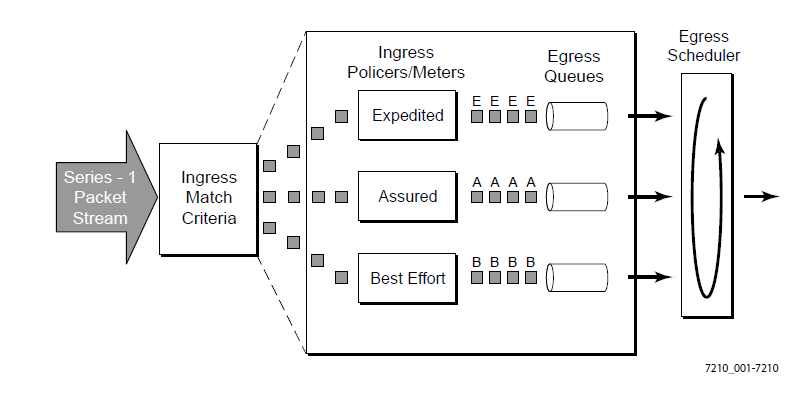Service ingress QoS policies define ingress service FC queues or meters and map traffic flows to FC on access SAP ingress.
Not all 7210 platforms support queues and meters on service ingress. The support varies across different platforms. Please read the subsequent chapters and sections for more information.
When a service ingress QoS policy is created, it typically has some meters defined that cannot be deleted and is used for all traffic (both unicast and multicast traffic). These meters exist within the definition of the policy but only get instantiated in hardware when the policy is applied to a SAP. In a case where the service does not have multipoint traffic, for example Epipe service, the multipoint meters are not instantiated.
In the simplest service ingress QoS policy, all traffic is handled as a single flow and mapped to a single meter.
The required elements to define a service ingress QoS policy are the following:
a unique service ingress QoS policy ID
a QoS policy scope of template or exclusive
the number of classification and meter resources to allocate for this policy
the allocation of resources from the ingress internal CAM resource pool for use with service ingress QoS classification using the commands available under the CLI context configure>system>resource-profile. Additionally, the allocation of resources to the appropriate classification match criteria
at least one default FC meter. See Metering/policing and meter parameters for information about the parameters that can be configured for a meter.
Optional service ingress QoS policy elements include the following:
additional unicast meters, up to 31
additional multipoint meters up to 31
QoS policy match criteria to map packets to an FC
Each meter can have unique meter parameters to allow individual policing of the flow mapped to the FC. The following figure shows service traffic being classified into three different FCs.
